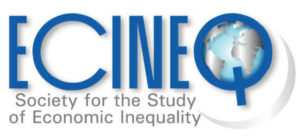Spatial divisions of poverty and wealth
Working Paper 2020-543
Abstract
We explore how different spatial compositions affect the educational achievement in mathematics of 16 year-old students in Chile, a Latin American country with high income inequality and school segregation. We develop a critical review on the literature on negative "neighbourhood effects" associated with concentrated poverty, complementing it with studies concerning self-segregation preferences by members of the upper-middle class. We combine administrative data about student performance with survey data for the 52 municipalities of the Metropolitan Region of Santiago de Chile. We cluster the districts based on factors such as unemployment, economic inequality, access to services, experiences of violence and stigmatization. Using longitudinal data, we look at the effect of each of the six spatial clusters on academic performance. Spatial clusters report a significant effect, above and beyond that of individual, household, and school-level characteristics. We conclude that space complements and reinforces the processes of accumulation of socioeconomic (dis)advantages.
Authors: Rafael Carranza, Gabriel Otero, Dante Contreras.
